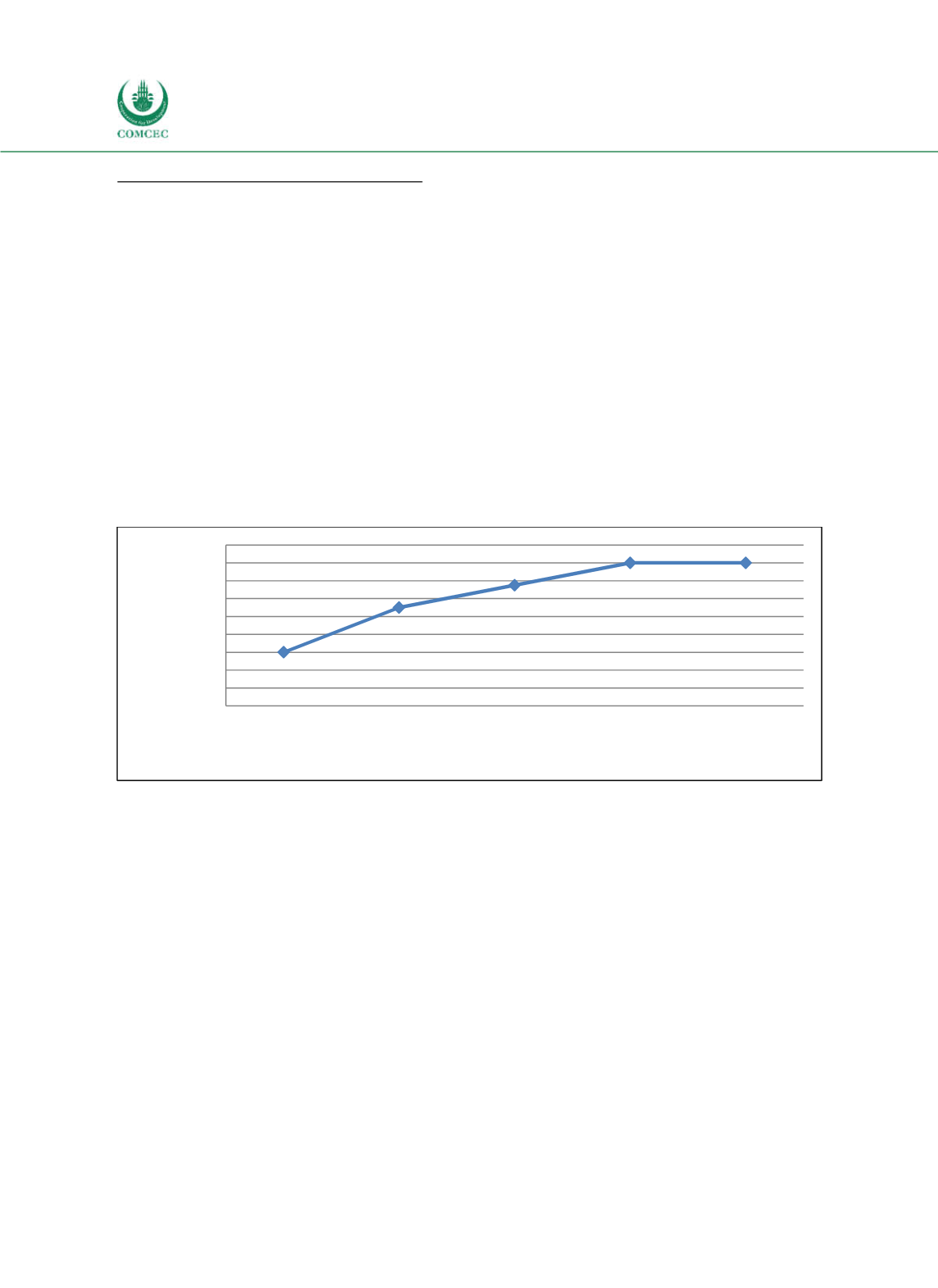

Improving Public Debt Management
In the OIC Member Countries
168
Borrowing and related financial activities
Operations (incl. Islamic finance)
Bond markets in Saudi Arabia have undergone a rapid evolution since 1988, when the first
sovereign bonds were issued. Issuance procedures, pricing mechanisms, maturity selection
and the utilization of Repos are fields that have experienced major changes in the last 15 years
(AlSayari 2003). While the government has mainly used its deposits at the central bank to
cover the deficit in the past, the bond market in Saudi Arabia is on the rise.
Government Development Bonds (GDBs) were lastly issued in 2007. Maturities of GDBs ranged
from two to ten years (AlDarwish et al. 2014). The investors in GDBs included domestic
financial institutions, banks and foreign investors (AlSayari 2003). The first sovereign bond
issuance since 2007 took place in mid2015 as financing needs increased following the
declining oil prices. The issuance in the amount of $4 billion was sold to domestic quasisovereign financial institutions (Reuters 2015). These conventional bonds, which were issued
with maturities of seven and ten years, had an initial yield of 2.57% and 2.88% (Reuters 2015).
The yield curve of government bonds shows a normal positive slope (see Figure 442).
Figure 4-42: Saudi Arabia - Yield Curve of GDBs (2007) and Government Bonds (2015)
Note: The yield curve for the GDBs is based on data from 2007, when they were lastly issued.
Source: SAMA (2016b), Reuters (2015).
To support the development of the domestic debt market and to conduct monetary policy, the
SAMA uses its own instruments: Repo and reverse Repo overnight operations, and SAMA Bills
and SAMA
Murabaha
with maturities ranging from one week to one year (AlDarwish et al.
2014). The return of SAMA Bills equals 80% of the Saudi Interbank Bid Rate. This rate is the
key interbank rate in Saudi Arabia, and serves as a benchmark for commercial and consumer
lending rates. SIBOR is influenced by the policy of SAMA, which sets the reverse Repo rate. The
reverse Repo rate is the key policy rate and marks the rate that commercial banks in Saudi
Arabia get on their deposits with SAMA. Changes in the reverse Repo rate can therefore add or
reduce liquidity in the markets. As the SAMA uses an exchange rate anchor in its monetary
policy framework the reverse Repo rate is set with reference to the target rate of the U.S.
Federal Reserve (Algahtani 2015).
Figure 443 shows yields on SAMA Bills with three different maturities over time. Yields
drastically declined in 2008/2009, which is a result of the reduction of interest rates (Repo
and reverse Repo rate) by the SAMA following the financial crisis and the subsequent
reduction of the target rate of the U.S. Federal Reserve. Between 2010 and the middle of 2015,
4.7000 4.8000 4.9000 5.0000 5.1000 5.2000 5.3000 5.4000 5.5000 5.6000
Two years
Three years
Five years
Seven years
Ten years
Yield (in %)
Maturity
















